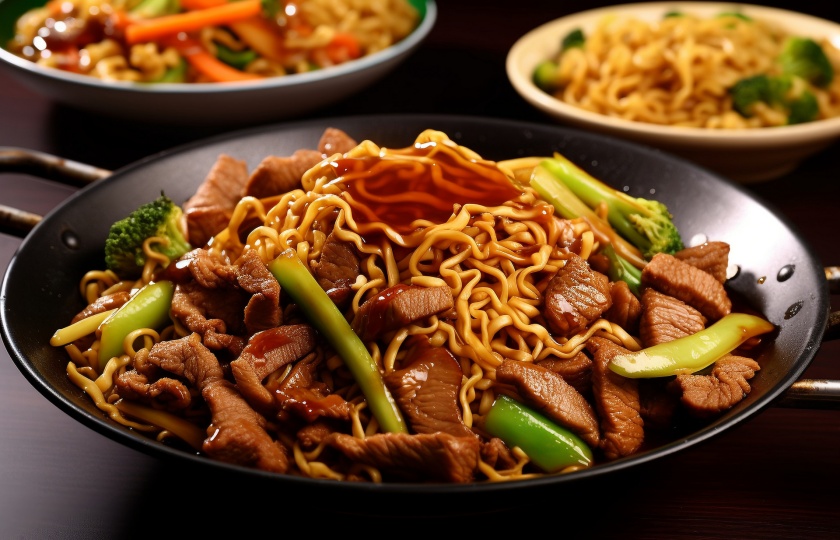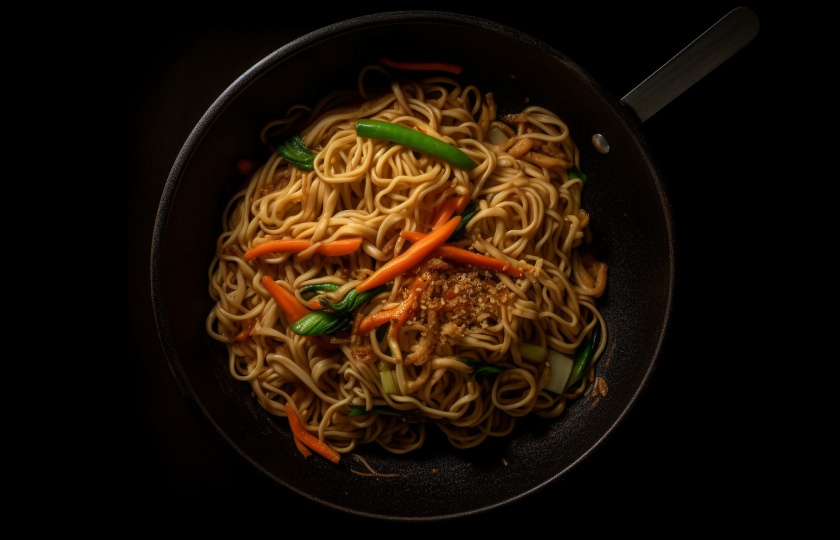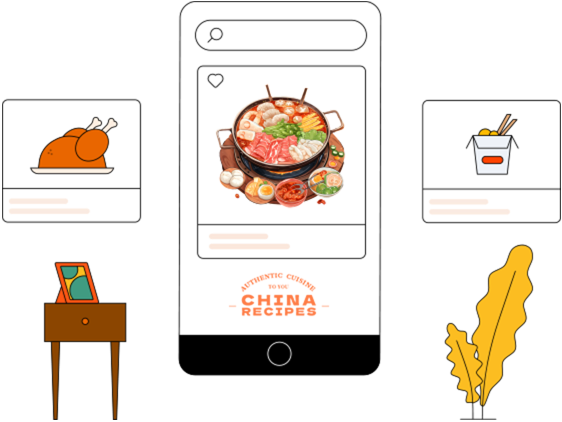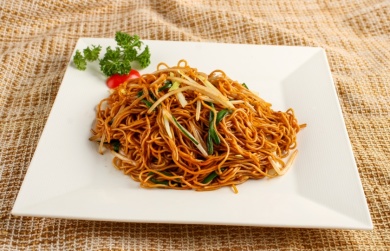Chow Mein vs Lo Mein Taste? Key Differences

Both chow mein and lo mein are delicious. So, chow mein vs lo mein taste? Let's take a look together!
Chow Mein vs Lo Mein Taste?
There are significant differences in the tastes of chow mein and lo mein:
Chow Mein
Chow mein is made by stir-frying with various vegetables at high temperatures. The high heat makes the surface of the noodles turn slightly browned, giving them a crispy, toasted flavor. At the same time, chow mein is stir-fried with seasonings such as light soy sauce, dark soy sauce, and oyster sauce. Therefore, chow mein emits a unique aroma, with a rich and mellow overall taste. The flavors of various ingredients blend together, creating a warm and rich taste experience. Sometimes chili sauce is added to provide a spicy kick.
Lo Mein
The texture of lo mein is relatively lighter. Its preparation is simple. After boiling the noodles, just serve them with different sauces. For example, in the classic sesame sauce lo mein, the thick and mellow sesame sauce evenly coats the noodles, offering a smooth texture. And for the fried sauce lo mein, the rich and savory taste of the meat sauce makes the noodles full of flavor.
The taste of lo mein leans more towards the mellowness of the sauce. The texture of the noodles is relatively light and refreshing. It doesn't have the oily aroma like chow mein, but instead, takes the unique flavor of the sauce as the core, giving people a gentle and pure taste enjoyment.
Is Chow Mein Crispy or Soft?
Most chow mein has a bit of a crispy texture, but it can also be soft and glutinous.

Normally, the chow mein I make has a crispy texture, which suits the taste of most people. Chow mein is stir-fried with favorite vegetables and meats until they turn slightly browned, with a rich and mellow texture.
Of course, if you prefer a softer texture, then boil the noodles a bit longer to make them softer. Then, when stir-frying, use medium-high heat and quickly stir-fry. After all the ingredients are well combined, you can take it out of the pot. The chow mein made this way will have a soft and glutinous texture.
How to Make Chow Mein Noodles Crispy?
To make chow mein crispy when stir-frying, you can achieve it through the following tips:
Noodle Selection
Noodle selection is crucial for getting crispy chow mein. Choose thin noodles as they are more likely to achieve a crispy effect. Thin egg noodles are a great choice.
Boiling Noodle Skills
Don't overcook the noodles. It is recommended to boil them until they are about 70-80% cooked, leaving a bit of a firm core. This makes it easier for the noodles to set and become crispy when stir-frying.
After boiling the noodles, you can rinse them with cold water to wash off the mucus on the surface and then thoroughly drain the water.
Frying Noodle Skills
Frying the noodles is an important step to make chow mein crispy. Pour more oil in the pan and heat it to 50-60% of the full heat. Carefully put the drained noodles into the pan and fry.
Pay attention not to use too high a heat when frying. Wait until the noodles gradually change color and become golden and crispy, then take them out and drain the oil for later use.
Stir-frying Skills
Leave a little oil at the bottom of the pan. First, stir-fry the side dishes until they emit an aroma. Then put the fried noodles in and quickly stir-fry evenly. After that, add light soy sauce and oyster sauce to enhance the flavor.
Stir-fry a few times and quickly take it out of the pot. Don't stir-fry for too long.
Why Is My Chow Mein Mushy?
Too High Heat: Most likely, burning the noodles while stir-frying is due to poor heat control. When stir-frying over high heat, you need to stir-fry quickly and frequently. If the noodles stay in one place for too long, they will burn at the bottom of the pan.

Too Little Oil: If you put too little oil when stir-frying chow mein, it will be difficult to turn the ingredients, leading to burning. Oil not only makes the ingredients taste better but also plays an "insulating" role to prevent the ingredients from directly touching the bottom of the pan.
Too Much Moisture in the Ingredients: If the noodles are not drained well or the vegetables are not dried after washing, during the stir-frying process, the evaporation of moisture will lower the temperature in the pan. After the moisture evaporates, the pan temperature rises rapidly, which can cause the dish to burn.
Do Chow Mein Noodles Get Soft?
Chow mein will become soft if left for too long.
Sometimes you may notice that the originally crispy chow mein becomes soft after being left for a while. This is because chow mein is in long-term contact with the air, and the moisture in the air combines with the noodles, causing the originally crispy chow mein to become soft.
Therefore, in daily life, it is recommended to eat chow mein promptly after it is made to enjoy the crispy texture.
Can You Use Regular Spaghetti Noodles for Chow Mein?
Spaghetti can be used to make chow mein.
Spaghetti is mainly made from wheat flour. After being cooked, it has a firm and chewy texture and is not as easy to boil soft or stick to the pot as ordinary noodles.
Secondly, spaghetti can absorb sauce well. Whether it's Chinese or Western sauce, it can be well seasoned.
Moreover, spaghetti comes in various shapes, such as long and thin spaghetti and spiral pasta, offering more choices.

How to Make Chow Mein with Spaghetti?
Boil the Noodles: Put the spaghetti into boiling water, add an appropriate amount of salt, and boil until it is about 70-80% cooked. Take it out, rinse it with cold water, and drain the water.
Season: Add a small amount of cooking oil to the cooked noodles and mix well to prevent them from sticking together.
Stir-fry: Heat oil in the pan. First, stir-fry the ingredients, then add the noodles and quickly stir-fry. Add an appropriate amount of soy sauce, salt, pepper, etc. to season.
Serve: After stir-frying all the ingredients evenly and until they emit an aroma, take them out of the pot.























